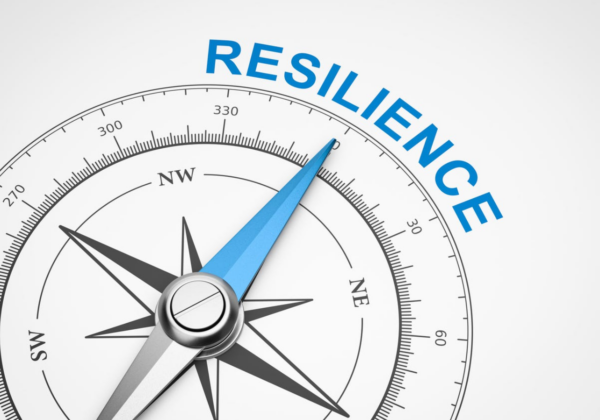Adapting to uncertainty and turbulence in the workplace has become the norm. However, according to new research, something else is occurring. In the midst of supply chain difficulties, environmental disruptions, and economic instability, organizations find solace in their resilience. And this resilience is transmitted to employees, influencing their mental health and stability.
After three consecutive years of ongoing disruption and economic uncertainty, 53% of executives acknowledge their company’s resiliency is not where it should be. This is one of the leading findings of a global business survey conducted by SAS, which included in-depth interviews with 2,414 senior executives from companies with more than 100 employees.
The purpose of the study was to determine what measures companies in Brazil, France, Germany, India, Japan, the United Kingdom, Benelux, Iberia, and the United States are taking to navigate change, seize opportunities, build business resilience, and implement leadership strategies during volatile times.
The Divide in Resilience

The research reveals a disparity between the significance executives place on resilience and the resilience of their organizations. According to Jay Upchurch, executive vice president and chief information officer at SAS, “there is a distinct difference between rhetoric and actuality when it comes to business resiliency, especially in these challenging and uncertain times.”
He explains that his company intends to assist executives in outpacing their rivals by utilizing data analytics to develop a resilient strategy. “We discovered a worrisome Resiliency Gap in which nearly all executives agree resiliency is essential, but fewer than half consider their company resilient.”
According to survey results:
Nearly all (97%) executives believe that resilience is very or somewhat essential, but fewer than half (47%) believe that their organization is resilient.

Roughly half (46%) of respondents acknowledge they are unprepared to deal with disruptions and struggle to address issues such as data security (48%), productivity (47%), and promoting technology innovation (44%).
Even though the resiliency gap is a current reality, 81% of respondents believe resiliency can be achieved with the proper guidance and instruments. And more than ninety percent of respondents believe that data and analytics are essential to a resilience strategy.
Estate Empire He’d Sold
The Mandalorian could be anyone, according to the producer of ‘The Mandalorian.’ Where to Stay, Dine, and Drink in Louisville Beyond the Kentucky Derby
Upchurch explains, “When it comes to business resiliency, one in two executives indicate gaps in resiliency planning and strategy and acknowledge they are not completely prepared for disruption.” “However, it’s not all dread and foreboding.
Executives are sanguine about resolving the Resiliency Gap and are investing in business resilience. Nearly all executives agreed that data and analytics play an important role in this context, but many struggle to obtain the right insights due to the difficulties of nurturing the appropriate skill sets among their workforce.”
The Five Resilience Standards
Upchurch acknowledges that putting the appropriate data and analytics in the hands of executives is the first step in assisting businesses in closing the resiliency gap. The Resilience Assessment Tool from SAS enables organizations to track, adapt to, and even outpace market shifts. The assessment is a free instrument that anyone can use to undertake their own business assessment and action planning based on the Resiliency Index.
This instrument, along with the report’s insights from high-resilience executives, provides practical advice for fostering greater business resilience. Using the five fundamental “resilience rules” examined in the study, business leaders can assess their own company’s resiliency quotient.
- Quickness and agility.
- Innovation.
- Fairness and accountability.
- Data culture and literacy
- Curiosity
SAS classifies respondents into three groups:
- Superior resilience: 26%
- 54% of individuals have a moderate level of resilience
- 20% have low resiliency
The report revealed that high-resiliency executives place a higher value on and invest more in each of the five areas than low-resiliency executives. This was consistent across country and industry segments, indicating that executives view these as foundational resiliency strategy components. Almost all executives with high levels of resilience (96%) utilize internal and external data and analytics to inform their decision-making, which is crucial for navigating change and ensuring business continuity. The highly resilient business executives reported implementing more data tools than their less resilient counterparts (93% versus 22% low resiliency).
Seventy percent of respondents are optimistic about their country’s economic destiny, and eighty percent are presently investing in resilience planning and strategy. Upchurch comments, “Our research demonstrates unequivocally that each of the Resiliency Principles plays a crucial role in assisting businesses to promote business resiliency.” “And executives with high levels of resiliency regard each rule to be crucial to their businesses. As part of their resiliency planning and strategy, businesses should prioritize and activate them all with equal vigor.
How To Increase Your Organization’s Resilience
The importance of data and analytics in the implementation of the Resilience Principles is a key conclusion from this research. Upchurch explains, “We want to help executives across industries outpace their rivals by using data and analytics to develop a sustainable resiliency strategy.” “By utilizing the Resiliency Index, a research and evaluation instrument, organizations will be able to better identify extant strengths and potential growth areas.
This understanding will assist them in closing gaps and strategically fortifying the tools and systems that give them agility in the face of challenges and disruption.”
Upchurch insists that business executives must grow in certain areas in order to become more resilient and remain competitive. “Organizations must operate with speed and dexterity in order to adapt rapidly to the current rate of change,” he notes.
“In a world of uncertainty, the ability to generate new innovations that enable them to respond and adapt to shifting conditions is also crucial. However, they must also ensure that technological innovations that enhance resilience are inclusive and do not negatively affect vulnerable populations.”

